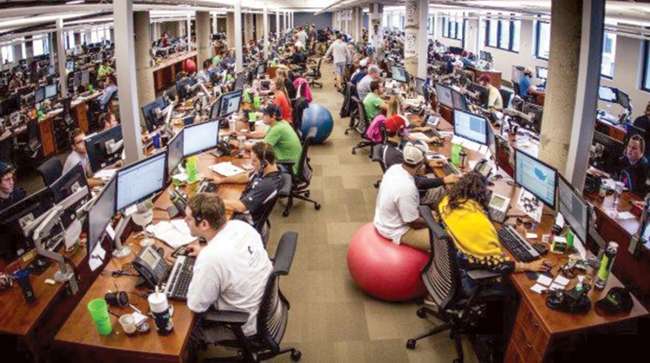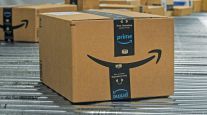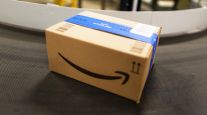Staff Reporter
Shippers Advance 3PL Focus Post-Pandemic

[Stay on top of transportation news: Get TTNews in your inbox.]
The shipper community continues to increase its use of third-party logistics providers in the aftermath of the pandemic and major technological changes.
“There were two things that have happened,” said Evan Armstrong, president of market research and consulting firm Armstrong & Associates. “We had the complete disruption from the shutdowns and from the coronavirus. At the same time, technology has been advancing. Those two things put together make it a lot more streamlined of a process.”
Armstrong & Associates data shows the domestic transportation management 3PL segment shot up 52.4% to $139 billion during the height of the pandemic in 2021. It continued to grow afterward, with the segment increasing 8.6% to $151 billion in 2022.
“The last two years have been great,” Armstrong said. “Shippers have definitely reached out to 3PLs to provide excess capacity over and above their asset relationships. I think it really showed the need to have flexible solutions for shippers on the transportation side.”

Armstrong
Coyote Logistics released a study March 31 that showed 50% of shippers increased their spending on 3PLs over the past two years, while only 10% decreased spending, and 52% plan to increase their spending next year, while only 10% plan a decrease. It also found 75% of shippers believe a mix between in-house and outsourced capacity is ideal.
“Over the last two years, shippers grew both internal teams and external provider bases, and came into this year expecting to do more of the same,” said Ben Steffes, vice president of managed services at Coyote. “It really speaks to how important the supply chain has become to modern corporate strategy.”
Steffes believes this increased focus on supply chain management in corporate strategy is driving the shift alongside the wide breadth of services 3PLs can now offer. He noted the coronavirus and resulting supply chain disruptions exacerbated these existing trends because the volatility ratcheted up the complexity. He compared it to putting gasoline on a bonfire.
[Supply chain management] has become an area where companies can either pick up a competitive advantage or risk losing market share.
Ben Steffes, vice president of managed services at Coyote Logistics
Image
“There is so much more focus on supply chain management in corporate strategy, and it has become an area where companies can either pick up a competitive advantage or risk losing market share,” Steffes said. “While this was always true to a certain extent, the speed that companies are expected to deliver today dramatically increases the complexity and difficulty.”
Armstrong noted it makes sense for small and midsize shippers to leverage 3PLs. But he also has seen larger shippers use a mix of core asset-based carriers and 3PLs. He added that a lot of these larger players compare contractual lanes against the spot market to get a better price.
“Longer-term transportation agreements where you do a lot of static tendering to carriers, I think those days are numbered and it’s going to become much more dynamic going forward,” Armstrong said. “And there’s a place for 3PLs in that world because they do have a lot of smaller-carrier relationships and a lot of flexibility in how they source capacity.”
The Council of Supply Chain Management Professionals has seen the traditional 3PL service model evolve into a multiservice and multifunction model that is increasingly reliant on digital innovation. That includes addressing capacity constraints during the pandemic while continuing to advance technological expertise.

Baxa
“Supply chains are highly dependent on 3PLs for truck capacity, with a range of utilization from contracting entirely with 3PLs as their sole source for capacity to others utilizing 3PLs for surge capacity,” CSCMP President Mark Baxa said. “3PLs also offer additional benefits such as digital solutions to manage the movement of product from origin to destination, and the events associated with that movement and an ability to perform network analysis. In the most recent times where we did see significant spikes in demand coming out of the COVID-19 pandemic, many shippers looked to 3PLs to help solve capacity constraints.”

Kayne Grau, CEO of Uptake, discusses ways that fleets can use data to prevent expensive truck repairs. Hear the program above and at RoadSigns.TTNews.com.
Baxa noted supply chain leaders and practitioners alike recognized quickly that solving the challenges brought on by the pandemic required the visibility and solutions capability of 3PLs. He added that became necessary to navigate through what he believes was the most difficult period in modern supply chain history.
“Truck capacity has been a challenge for much of the last three years, resulting in higher spot rates and decreased service levels,” said Jeff Jackson, Penske Logistics executive vice president of dedicated contract carriage. “As a result, we’ve seen many shippers looking to 3PLs to secure truck capacity at more predictable costs and superior service levels.
“While there are several reasons for this shift to 3PLs, many of which will persist despite the spot market, it’s important to recognize that the spot market’s ebbs and flows will continue to push and pull demand for 3PLs to fill capacity.”
Jackson pointed to the driver shortage, equipment cost and availability, regulatory challenges, technology costs, insurance costs and the proliferation of nuclear verdicts as helping to drive the shift.
Want more news? Listen to today's daily briefing below or go here for more info:





